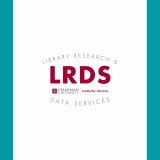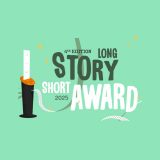
Celebrities of the Chapman University Digital Commons: Dr. Jared Rubin
May 13, 2020
Two weeks ago, we announced that the Chapman University Digital Commons had reached the fantastic milestone of over one million downloads! In a new mini-blog series, we’ll be chatting with a few celebrities of the Digital Commons – authors whose articles have been milestone items for the Digital Commons. In this first installment, we’re chatting with Dr. Jared Rubin, whose Economic Science Institute (ESI) article, “Causes and Consequences of the Protestant Reformation,” is the most downloaded item in the Digital Commons, having been downloaded over 25,000 times!
The abstract for the article reads as follows: “The Protestant Reformation is one of the defining events of the last millennium. Nearly 500 years after the Reformation, its causes and consequences have seen a renewed interest in the social sciences. Research in economics, sociology, and political science increasingly uses detailed individual-level, city-level, and regional-level data to identify drivers of the adoption of the Reformation, its diffusion pattern, and its socioeconomic consequences. This survey takes stock of the research so far, tries to point out what we know and what we do not know, and which are the most promising areas for future research.”
Dr. Rubin chatted with us over email about the article, answering the following interview questions.
1. How did the article make its way onto the Digital Commons? Did you submit it to our Coordinator of Scholarly Communications, Kristin Laughtin-Dunker, or did she reach out to you?
I submitted the paper to the ESI Working Papers series. I believe, from there, it automatically made its way to the Digital Commons (although at one point I was in touch with someone, perhaps Kristin, about submitting all of my papers up to that point, which I did).
Kristin Laughtin-Dunker adds: “In 2015, the Research Lab Manager for the Economic Science Institute (Megan Luetje) reached out to me about hosting all of the ESI Working Papers and as many of the ESI publications as possible in Digital Commons, after one of the faculty members had told her about it. She has been sending me new working papers on a regular basis to add to the collection, including this one.
At some point after that, I reached out to Jared for his CV so I could add as many of his other publications as possible. Post-publication, this always involves checking publishers’ permissions to see what version of an article we might be allowed to include. Sometimes they let us use the final, published version, but more often it is either a working paper or the final, peer-reviewed manuscript that we are allowed to share.
Since then, I have added new publications as permitted as they have become known to me, whether through the author (or someone like Megan) notifying me directly or through web alerts.”
2. Do you have any thoughts you’d like to share about Open Access and academia?
Yes – Open Access tends to be where Economics (as a discipline) gets it right pre-publication but wrong post-publication. There is a tradition in Economics to make working papers available to the public prior to publication. Repositories like the Digital Commons are great for this. However, we have a major problem post-publication (which is shared with many other disciplines): the paywall. It is really costly to access published materials without an institutional subscription. I think that places like the Digital Commons (where “close to final” prints are made available) are a great remedy.
3. How do you use the Leatherby Libraries and/or Digital Commons in your research?
I make great use of our journal subscriptions (nearly daily!). Before the shutdown, access to certain books was also essential for my research.
4. Given the number of times your article has been downloaded, has anyone outside the Chapman community reached out to you about it, to use it as a source, or in another capacity?
Yes – many people have reached out to me and my coauthors about this article. It is a survey article (on recent social science articles on the Protestant Reformation), and it is written in a non-technical manner. I know it is used as a reading in many undergraduate courses (including one of mine!) and it is well-cited. I have also had a number of people from outside academia contact me about some aspect of the article.
5. Is there anything noteworthy you’d like to share about your collaborators? For instance, were they your students?
My collaborators are more senior than myself! They are both world-renowned social scientists (Steve Pfaff is a sociologist and Sascha Becker is an economist). We like to think of this as a nice example of the benefits of interdisciplinary work. 🙂

